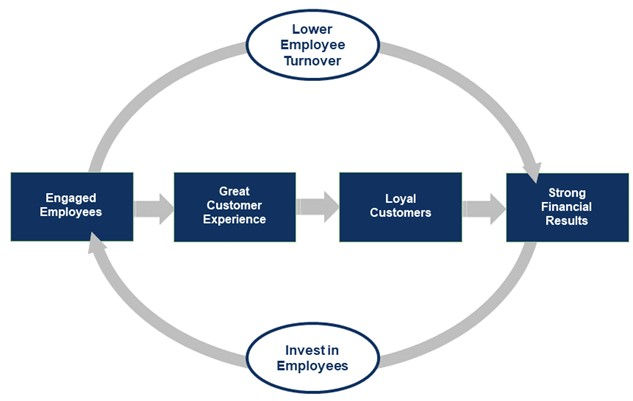Best Practices in Managing CX: Understand the Linkages
- ericsmuda
- Jun 7, 2023
- 4 min read
Last week, I began a series of articles about my four best practices for managing an ongoing customer experience program:
Start with your employees
Understand the linkages
Have robust closed-loop processes
Governance
I outlined why it is critical to start with your employees and the benefits of learning from those closest to your customers and the first link in the service profit chain. This week I focus on understanding the linkages.
Understand the Linkages
At its most basic, “understanding the linkages” is about ensuring you definitively know the relationship between your internal operational and transactional metrics, your customer feedback, and your business outcomes. Previously, building these models used to resemble something like this: statistical analysis was done to “correlate” internal metrics with transactional surveys or attributes in a relationship survey; key driver analysis was done on the survey data to link the attributes or transaction measures to key drivers and then to an overall survey metric such as NPS, Overall Satisfaction, or some composite or index metric comprised of multiple outcome metrics; and then additional statistical analysis was done to “correlate” these survey metrics to business outcome measures such as revenue growth, market share growth, or profitability growth. Resulting models looked something like this:

And there was strong value in these models to help prioritize actions to be taken based on greatest impact. Statisticians can provide plenty of commentary on the validity and cautions of these models. One practical caution with these models is that too often survey vendors, voice of the customer teams, and CX teams try to use these as ROI models because moving this metric up by X%, leads to a Y% change in survey outcomes, which leads to a Z% increase in a business outcome metric. This is predicted ROI, not an actual ROI that will pass muster with your finance team. (I will write about how to actually measure ROI in an upcoming newsletter.)
Advancements in Text Analytics
With the advancements made in text analytics over the past several years, you can now do this analysis based on responses to open-ended comments on surveys, which have richer data than quantitative metrics. You can now also replicate doing this analysis with unstructured data from more data sources—comments in surveys, call center or chat transcripts, social media commentary and reviews, CRM notes—to provide a larger and richer data set for analysis that also represents a greater percentage of your customer base than surveys typically do. Doing this analysis across multiple data sources adds additional insight and confidence in the resulting model.
Advancements in Predictive Analytics
The development of more advanced predictive analytics has also made these models more robust and often can predict business outcomes based solely on internal metrics and behavioral data without requiring any survey data. Several analytics vendors and many analytic professionals I have spoken with advocate for eliminating surveys and simply using predictive analytics and operational data only since they represent all customers and not just the smallish percentage that reply to surveys.
While I agree with making better use of actual transactional and behavioral data than we have historically, I am not a proponent of eliminating surveys for two reasons:
1) I don’t have confidence that companies will act on improving an individual customer’s issue that they notice in their data rather than hearing directly from a customer. For example, while airlines know which seat-back entertainment devices don’t work on a given flight or if there were Wi-Fi issues throughout the flight, my experience is that they don’t act on that data and proactively reach out to customers.
2) While surveys do only represent a small percentage of your customer base, this feedback is a gift and gives you insight into how the experience helped or damaged their emotional attachment to the brand. A survey also allows you an opportunity to interact with that individual customer to resolve any issues or build a deeper relationship. We all know that many more customers are simply silent and walk away and that you don’t see this broken experience in your transactional data until after they have churned. So having the survey feedback, even on a smaller base, gives you some chance to rescue a customer in real time and then go analyze your operational and transactional data to determine how many other customers might have had the same experience and proactively try to resolve issues and prevent churn as well.
In conclusion, you must understand the relationship between your internal metrics view of how the business is performing and how customers perceive the experience so that you can optimize your operational performance from a customer lens. And you must understand how customer perceptions and behaviors foretell future business outcomes, such as customer growth, revenue growth, market share, and profitability growth.
Come back next week to learn about the third best practice in managing CX: Robust Closed-Loop Processes.
This article was first published in my LinkedIn newsletter, Transformational CX.
Subscribe to this newsletter and follow me on LinkedIn: https://www.linkedin.com/in/ericsmuda/
To discuss how I can help your company, please contact me at: eric.smuda@outlook.com




Comments